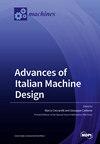开发后向式汽车座椅约束系统
IF 2.1
3区 工程技术
Q3 ENGINEERING, ELECTRICAL & ELECTRONIC
引用次数: 0
摘要
在自动驾驶汽车中,乘客可以将座位设置在一个非常规的座位位置,比如朝后。这样的坐姿会增加头部和颈部系统在正面碰撞中扭伤的风险,因为正面碰撞通常比追尾碰撞更严重。本文表明,一个面向前的后排座椅优化后的冲击保护需要重新设计作为一个面向后的座椅。在论文的第二部分,也是正文部分,开发了一种面向后置汽车座椅的约束系统,并利用64 km/h的delta-V进行了正面碰撞仿真,对其性能进行了评价。所设计的座椅系统包括两个刚性躯干板,一个固定的躺椅和一个能量吸收器下的座位盘。在未使用开发的约束系统的情况下,第50百分位男性人体模型暴露在超过600 N的颈部剪切力下,使用开发的约束系统,在64 km/h δ v的正面碰撞中颈部剪切力小于350 N。除了鞭打外,还评估了头部、胸部、下肢和下背部受伤的风险。结果表明,所开发的约束系统对乘员的保护是成功的,所有的评估标准值都低于伤害评估参考值。本文章由计算机程序翻译,如有差异,请以英文原文为准。
Development of a Restraint System for Rear-Facing Car Seats
In self-driving vehicles, passengers can set their seats in an unconventional seating position, such as rear-facing. Sitting in such an orientation can increase the risk of whiplash in the head-and-neck system in a frontal impact, as frontal crashes usually have higher severities compared with rear-end crashes. This paper shows that a forward-facing front seat optimised for rear-impact protection needs to be redesigned to be used as a rear-facing seat. In the second and main part of this paper, a restraint system for rear-facing car seats is developed, and frontal impact simulations with 64 km/h of delta-V are used to evaluate its performance. The designed seating system comprises two rigid torso plates, a fixed recliner and an energy absorber under the seat pan. Without using the developed restraint system, the 50th percentile male human model is exposed to neck shear forces exceeding 600 N. With the developed restraint system, neck shear forces are less than 350 N in frontal impacts with 64 km/h of delta-V. Apart from whiplash, the risk of head, chest, lower extremity and lower back injuries are also evaluated. The results confirm that the developed restraint system successfully protects the occupant since all assessment criteria values are lower than the injury assessment reference values.
求助全文
通过发布文献求助,成功后即可免费获取论文全文。
去求助
来源期刊

Machines
Multiple-
CiteScore
3.00
自引率
26.90%
发文量
1012
审稿时长
11 weeks
期刊介绍:
Machines (ISSN 2075-1702) is an international, peer-reviewed journal on machinery and engineering. It publishes research articles, reviews, short communications and letters. Our aim is to encourage scientists to publish their experimental and theoretical results in as much detail as possible. There is no restriction on the length of the papers. Full experimental and/or methodical details must be provided. There are, in addition, unique features of this journal: *manuscripts regarding research proposals and research ideas will be particularly welcomed *electronic files or software regarding the full details of the calculation and experimental procedure - if unable to be published in a normal way - can be deposited as supplementary material Subject Areas: applications of automation, systems and control engineering, electronic engineering, mechanical engineering, computer engineering, mechatronics, robotics, industrial design, human-machine-interfaces, mechanical systems, machines and related components, machine vision, history of technology and industrial revolution, turbo machinery, machine diagnostics and prognostics (condition monitoring), machine design.
 求助内容:
求助内容: 应助结果提醒方式:
应助结果提醒方式:


